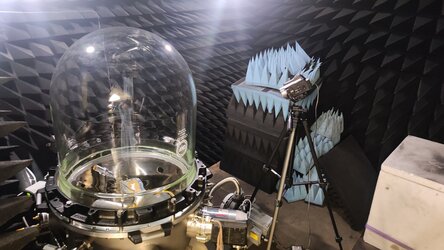Accept all cookies Accept only essential cookies See our Cookie Notice

About ESA
The European Space Agency (ESA) is Europe’s gateway to space. Its mission is to shape the development of Europe’s space capability and ensure that investment in space continues to deliver benefits to the citizens of Europe and the world.
Highlights
ESA - United space in Europe
This is ESA ESA facts Member States & Cooperating States Funding Director General Top management For Member State Delegations European vision European Space Policy ESA & EU Space Councils Responsibility & Sustainability Annual Report Calendar of meetings Corporate newsEstablishments & sites
ESA Headquarters ESA ESTEC ESA ESOC ESA ESRIN ESA EAC ESA ESAC Europe's Spaceport ESA ESEC ESA ECSAT Brussels Office Washington OfficeWorking with ESA
Business with ESA ESA Commercialisation Gateway Law at ESA Careers Cyber resilience at ESA IT at ESA Newsroom Partnerships Merchandising Licence Education Open Space Innovation Platform Integrity and Reporting Administrative Tribunal Health and SafetyMore about ESA
History ESA Historical Archives Exhibitions Publications Art & Culture ESA Merchandise Kids Diversity ESA Brand Centre ESA ChampionsSpace in Member States
Find out more about space activities in our 23 Member States, and understand how ESA works together with their national agencies, institutions and organisations.
Science & Exploration
Exploring our Solar System and unlocking the secrets of the Universe
Go to topicAstronauts
Missions
Juice Euclid Webb Solar Orbiter BepiColombo Gaia ExoMars Cheops Exoplanet missions More missionsActivities
International Space Station Orion service module Gateway Concordia Caves & Pangaea BenefitsLatest
Space Safety
Protecting life and infrastructure on Earth and in orbit
Go to topicAsteroids
Asteroids and Planetary Defence Asteroid danger explained Flyeye telescope: asteroid detection Hera mission: asteroid deflection Near-Earth Object Coordination CentreSpace junk
About space debris Space debris by the numbers Space Environment Report In space refuelling, refurbishing and removingSafety from space
Clean Space ecodesign Zero Debris Technologies Space for Earth Supporting Sustainable DevelopmentLatest
Applications
Using space to benefit citizens and meet future challenges on Earth
Go to topicObserving the Earth
Observing the Earth Future EO Copernicus Meteorology Space for our climate Satellite missionsCommercialisation
ESA Commercialisation Gateway Open Space Innovation Platform Business Incubation ESA Space SolutionsEnabling & Support
Making space accessible and developing the technologies for the future
Go to topicBuilding missions
Space Engineering and Technology Test centre Laboratories Concurrent Design Facility Preparing for the future Shaping the Future Discovery and Preparation Advanced Concepts TeamSpace transportation
Space Transportation Ariane Vega Space Rider Future space transportation Boost! Europe's Spaceport Launches from Europe's Spaceport from 2012
Testing lunar 4G operations
Thank you for liking
You have already liked this page, you can only like it once!
LTE/4G is coming to the Moon, to help support future international exploration efforts. In late 2019, the ESA-VSC High Power Radio Frequency Laboratory and Nokia tested an advanced prototype LTE Base Station with integrated Evolved Packet Core (EPC) in simulated lunar conditions.
NASA has selected Nokia to develop a lunar communications wireless network based on cellular 4G ‘Long Term Evolution’ (LTE) technology, potentially enabling live video streaming and remote control of rovers, lunar bases and associated infrastructure. Nokia will be partnering with Intuitive Machines, a leading aerospace company headquartered in Houston, Texas, to integrate Nokia’s LTE/4G network into its Nova-C lunar lander and deliver it to the lunar surface.
In late 2019, as part of an internally funded Nokia Bell Labs research effort to test their advanced prototype LTE BTS, Nokia turned to a specialist in high-power radio phenomena: the High Power Radio Frequency Laboratory, run jointly by ESA and the Valencia Space Consortium, a non-profit organisation set up by Valencia’s two universities, its regional government and municipality.
Lab manager David Raboso explains: “The particular concern was an effect called ‘multipactor’, where strong radio frequency energy in vacuum can generate an avalanche of secondary electron emissions from the RF device itself, resulting in damage or even total breakdown of the system.
“We used radioactive strontium-90 sources and ultraviolet lamps to ‘seed’ low-energy electrons while testing operations of the LTE Base Station across three different temperature ranges, covering the qualification level and operational requirements.
“The results showed the LTE Base Station design is indeed robust against the multipactor effect, giving strong confidence that it can operate on the Moon and in space, as designed.”
Originally set up to serve the first generation of ESA radar Earth observation missions, the ESA-VSC High Power Radio Frequency Laboratory has gone on to serve hundreds of ESA and commercial space missions, along with associated research and development.
An additional facility, the High-Power Space Materials Laboratory, has been set up by ESA and VSC to investigate the associated challenges for materials thrown up by high-power RF operations.
-
CREDIT
Nokia -
LICENCE
ESA Standard Licence

ESPRIT HALO-Lunar Communication System

High-power lasers go the distance

Discharge test for launcher antenna

6x6 mm GaN chip















 Germany
Germany
 Austria
Austria
 Belgium
Belgium
 Denmark
Denmark
 Spain
Spain
 Estonia
Estonia
 Finland
Finland
 France
France
 Greece
Greece
 Hungary
Hungary
 Ireland
Ireland
 Italy
Italy
 Luxembourg
Luxembourg
 Norway
Norway
 The Netherlands
The Netherlands
 Poland
Poland
 Portugal
Portugal
 Czechia
Czechia
 Romania
Romania
 United Kingdom
United Kingdom
 Slovenia
Slovenia
 Sweden
Sweden
 Switzerland
Switzerland
























